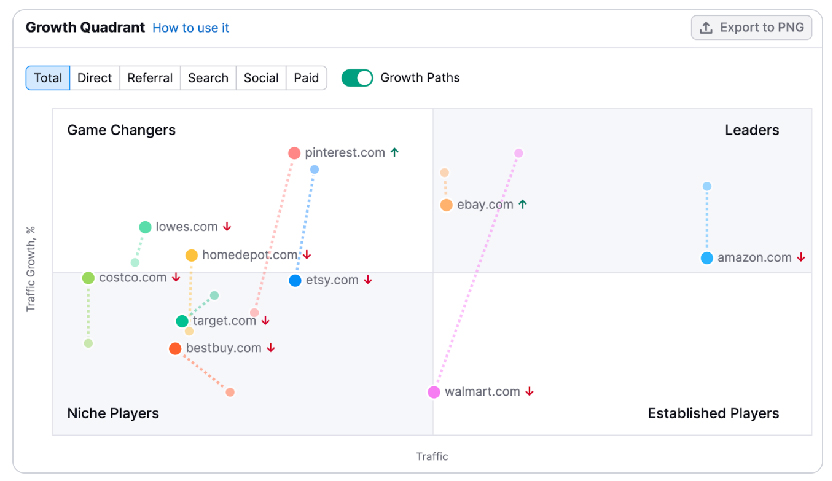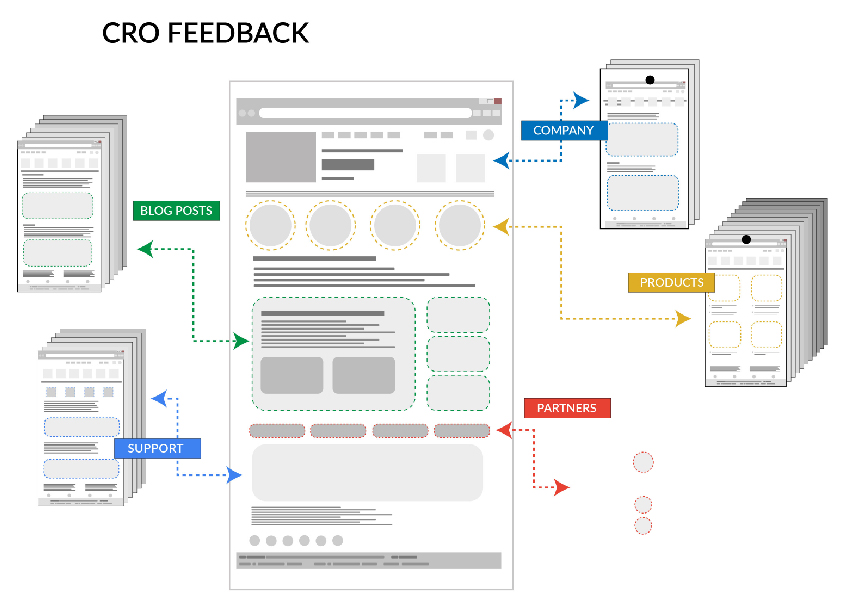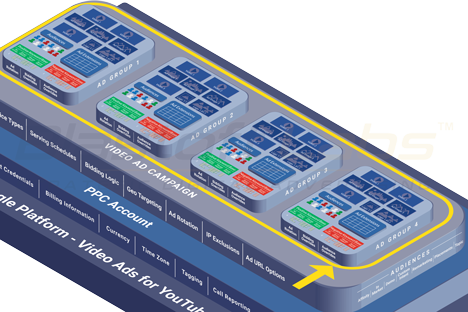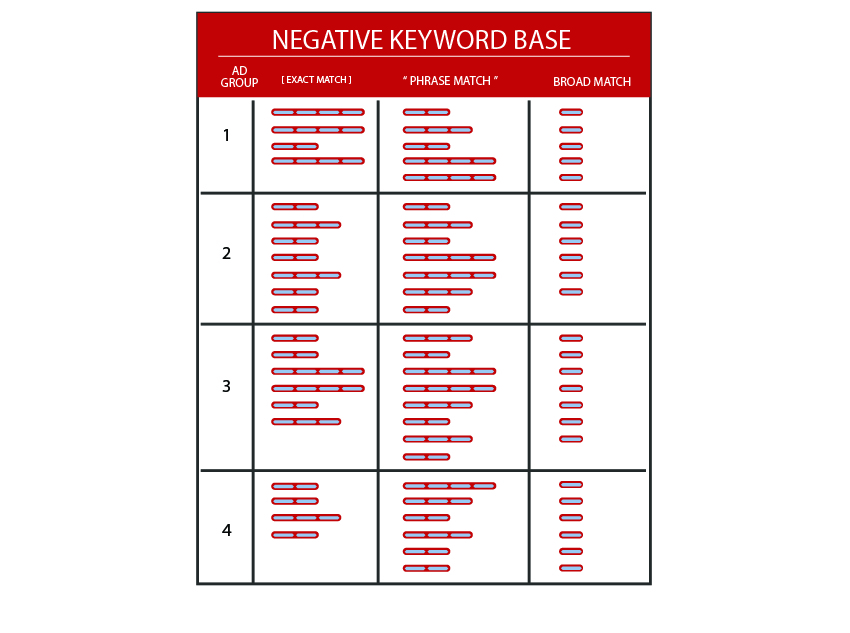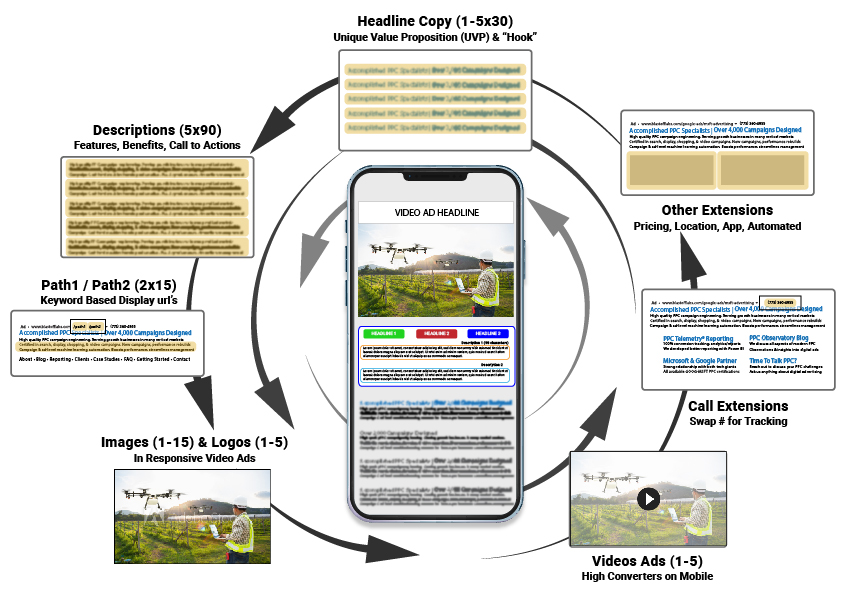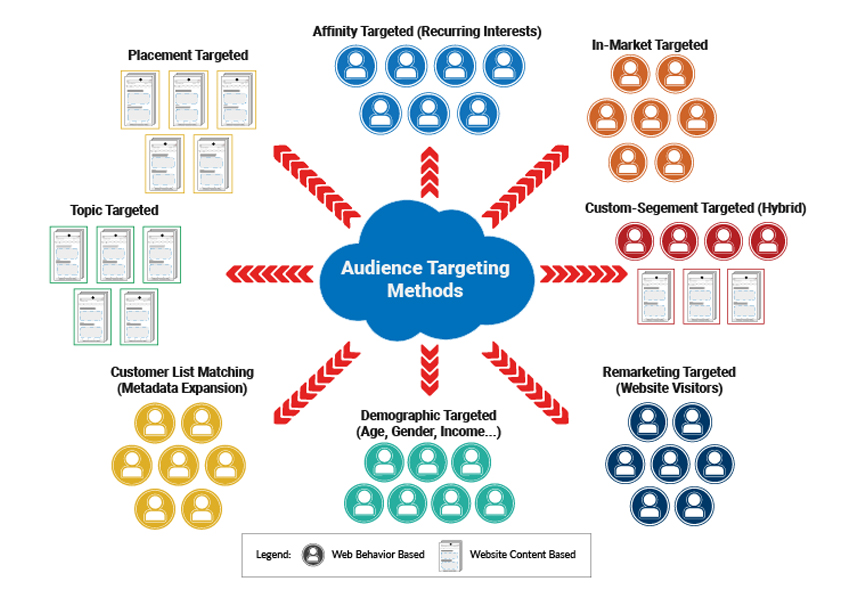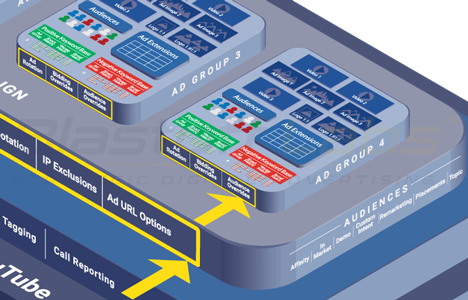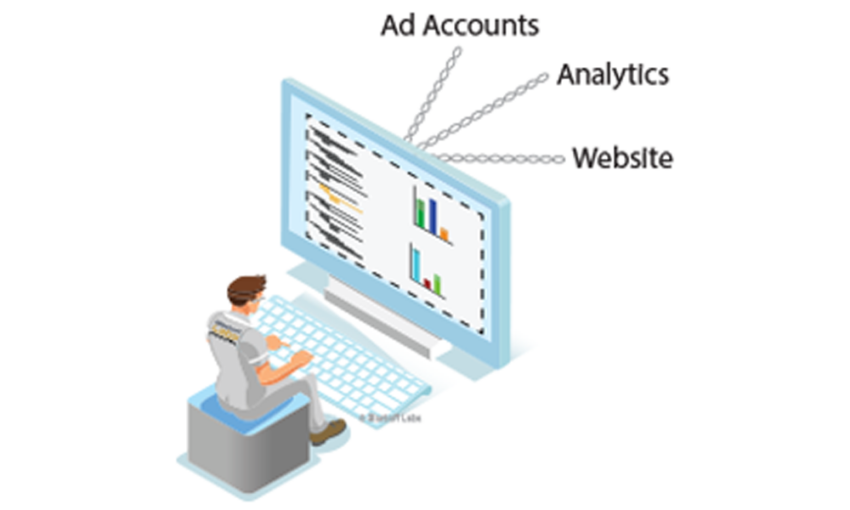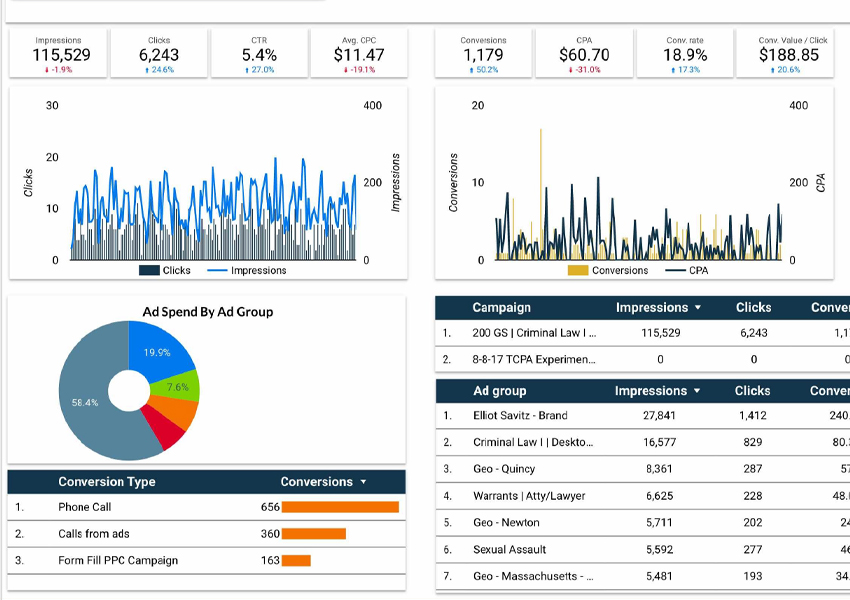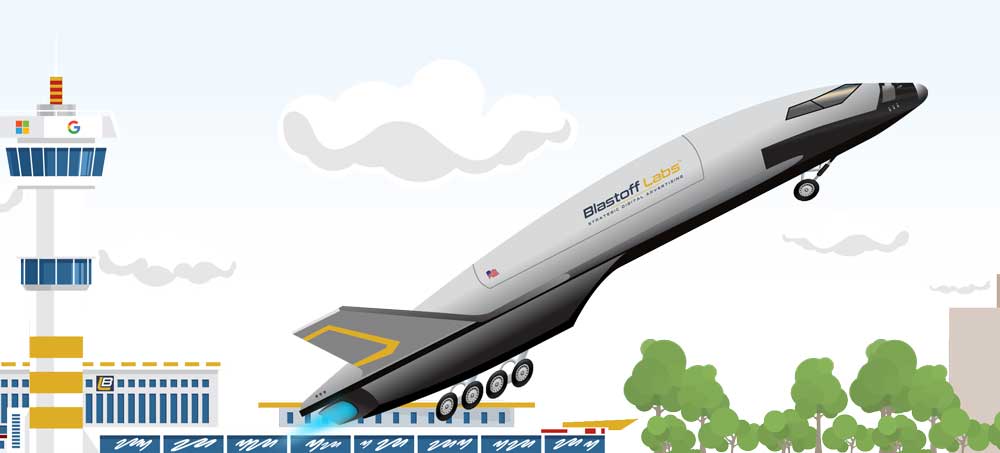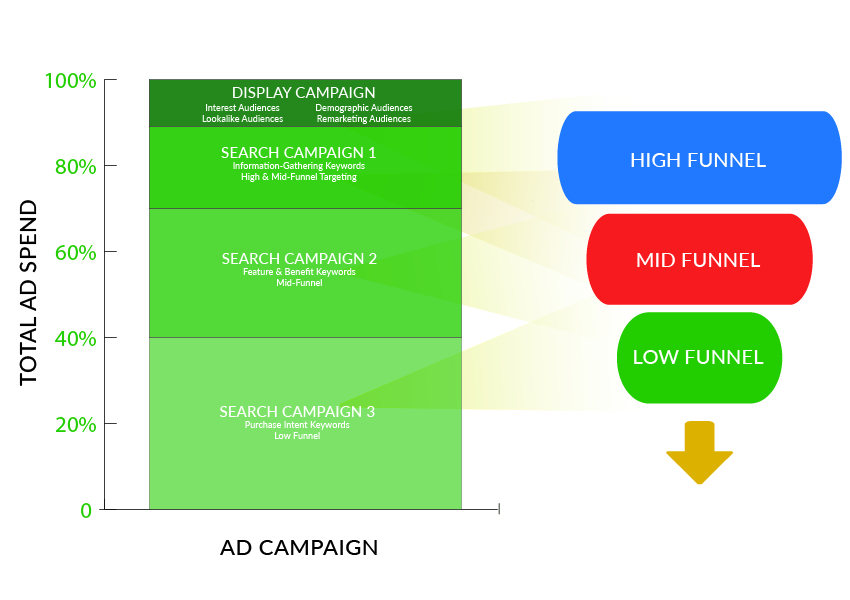Video Campaign Development: Our 13 Stage Process
In the course of building YouTube video ad campaigns, we’ve developed, tested, and continuously refined a systematic process for building quality YouTube video ad campaigns. We’ve come to view YouTube campaigns as a “sleeper marketing channel”. When you get the ad content, targeting, and campaign right in your vertical, video campaigns can be quite effective.
Below we illustrate the workflows we’ve developed to create winning video ad campaigns.
STAGE 1
In our video campaign competitive assessment process, we examine and characterize the competitive environment where our campaign will operate. Many campaigns need to rely upon video keywords that either overlap with other business sectors, have low click volume, or prohibitively expensive clicks -- and other intrinsic issues. Those issues influence how we structure search campaigns.
We identify direct and indirect competitors, familiarizing ourselves with their products, services, and positioning in the market. We look at the advertising history, ad copy, ad spend, and market positioning of the most significant online competition. While spidering their websites we gain a level of understanding which is uniquely useful in structuring and configuring search campaigns.
STAGE 2
Video campaigns are versatile and may generate traffic that enters the sales funnel high, mid, or low. We'll create CRO feedback for video campaigns based upon your particular campaign, to best match it to the funnel.
On landing pages for video campaign traffic, the primary goal is not necessarily to push for a conversion. We're more likely trying to clarify and strengthen the value proposition, coming at it from different angles or bringing new aspects of it to light.
Depending upon the nature of the product or service being advertised, it might make sense to also speak to and faciliate low-funnel traffic. But most video campaigns are handling high and mid funnel traffic.
STAGE 3
A secret to display campaign performance, is to create the video campaign structure by factoring targeting methods and ads by pairs, into ad groups.This creates video campaigns built around relevant groups of ads with relevant images and ad copy, resulting in better quality scores.
The combination of a high-quality targeting, careful ad copy development tailored to the offer, and properly structured ad groups creates a strong underlying foundation for display campaigns.
STAGE 4
Negative keyword discovery is a very useful feature that shouldn't be neglected when setting up video discovery ad campaigns.
Negative keywords applied in a video campaign overlay and inhibit the positive audience targeting. They allow us to shape who video discovery ads, and audience-targeted inline video ads serve to with more precision.
In a video campaign, ads won't show on videos that are related to the topic specified in each negative keyword.
STAGE 5
When we develop video campaign ads it requires an extra level of effort, creativity, and attention to detail as compared to the process for developing text ads. We have a process that can be summarized as follows: select a still image (frame) from the underlying video, then develop ad copy around that video based upon the classic creative process.
Because video ads are advertisements versus direct marketing, the performance of video campaigns is even more dependent upon the ads themselves than text-based search campaigns. So we've tested different creative approaches to invent, improve, test, and optimize display ads.
Video ads are based upon an attention-getting image (frame) from a video, that also creates a mood and tone for the ad. So this is done after we have a solid handle on the competitive positioning and targeting.
STAGE 6
Video campaign targeting is best done as an experimental process. Ads can be targeted to show on specific channels, or in front of & within specific videos.
Video campaign audience configuration is also a useful form of targeting. Depending upon the market targeted by the products in the shopping campaigns, we may both include, and exclude certain audiences.
We utilize both “Targeting” and “Observational” audiences and bid adjustments.
STAGE 7
When a new video campaign is launched, we will set and adjust bids manually for the first week or two. This is the fastest way to ramp up a campaign, andit establishes a baseline to compare with results from other types of bidding.
Manual bidding is the best way to force a new campaign to serve on YouTube, so enough data can be accumulated to nurse the campaigns onto automated bidding.
Video campaigns allow Sitelink ad extensions which tend to perform very well so we configure those. We also like the new Lead Form extensions. In a video campaign Google can auto-fill most of the fields.
STAGE 8
In a video ad campaign, viewers are presented with a call-to-action that takes them to a web property where any conversions happen.
Conversion tracking setup assigns a value to each conversion event that results from a view of the associated video. In our conversion value model, ideally, the conversion value is equal to the gross margin (value) that particular conversion action is creating.
In the case of a video campaign that advertises products, the conversion value would likely be (sales price-sales tax) * (average gross margin).
When a marketing attribution modeling is used, the value for each conversion is distributed ("attributed") up through the sales funnel, with weighting as defined by the best click attribution model for that event.
STAGE 9
To configure video campaign web analytics, we link the associated Web Analytics accounts with the PPC ads account(s). We also configure an Analytics profile that’s set up to support monitoring and analysis of the paid search campaigns.
This will include Google Analytics, Google Tag Manager, Google Search Console, Google Merchant Account, and similar Microsoft Advertising Accounts.
We may likely also request a login to the backend (Administrative access) area of your website. Typically this is needed when we anticipate installing plugin's such as the GTM plugin, or a call tracking plugin.
STAGE 10
Before launching a video ad campaign, we’ll configure video campaign reporting. Reports for video campaigns will be designed to fit your accounts, campaigns, and business objectives.
We include relevant charts along with summary key performance indicators (KPI's), for the reporting period and compare them to the prior reporting period.
For video campaigns, as with display campaigns, we place more emphasis on engagement parameters since video campaigns can drive a higher percentage of traffic into the upper and mid-funnel.
Ad visibility, click and conversion data, and financial performance ratios are part of the reporting. Video campaigns can sometimes also drive low-funnel traffic (conversions) directly. When that's the case we also report on conversion performance and financial ratio metrics.
STAGE 11
After a video campaign launch, it will tend to gain serving momentum fast. Campaign behavior after launch varies by market and campaign design, with average-size campaigns usually developing a consistent serving pattern within a few days of launch.
During the period immediately after a video campaign launch, we monitor new search campaigns closely making a series of corrective adjustments across our post-launch checklists, dialing the campaign into the type of orbit we're looking for. The campaign is continuously reporting valuable data about what's going on. That allows us to optimize the campaign early on in its engagements and minimize wasted ad spend.
STAGE 12
Video campaign optimization sometimes takes a bit longer to optimize. Some require 2 to 4 months to arrive at a suitable level of performance, as different targeting and ads are experimented with to find a winning formula.
Simpler video campaigns, and campaigns operating in business sectors with limited competition, can sometimes be optimized faster.
Some clients operating in highly competitive markets will benefit from attention to optimization weekly or daily. The point of diminishing returns is reached when additional returns from the video campaign's advertising margin approach the cost of optimization.
STAGE 13
Our clients receive video campaign performance management reports regularly as an integral component of our account management services.
For video campaign performance management, we customize our reporting to summarize all search campaigns on one page; and we provide an individual reporting page for each campaign. Reporting is a crucial aspect of managing campaigns for PPC advertisers.
Most reports are generated monthly, detailing performance in the period vs previous periods, and highlighting challenges/issues.


